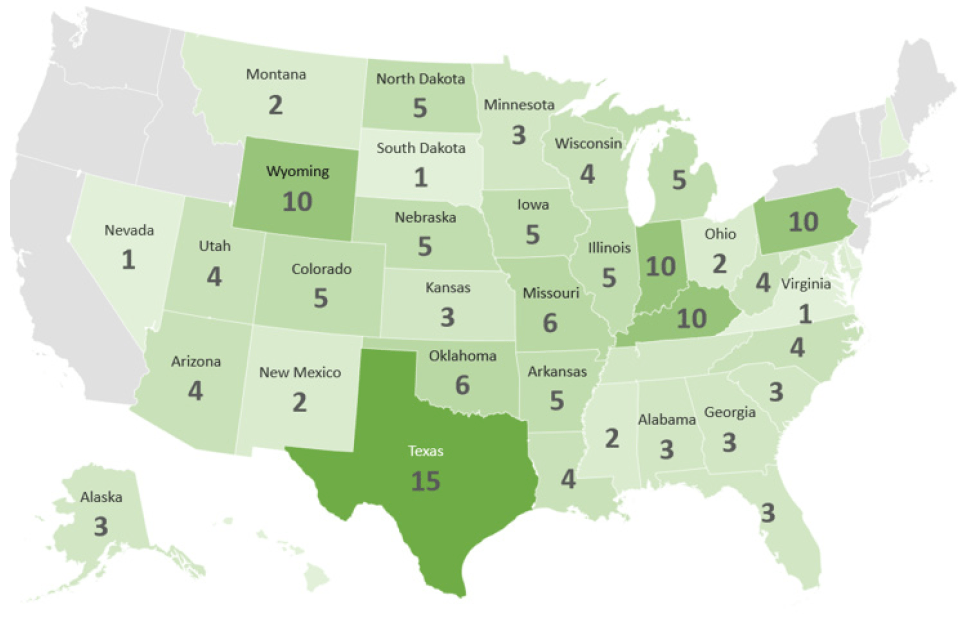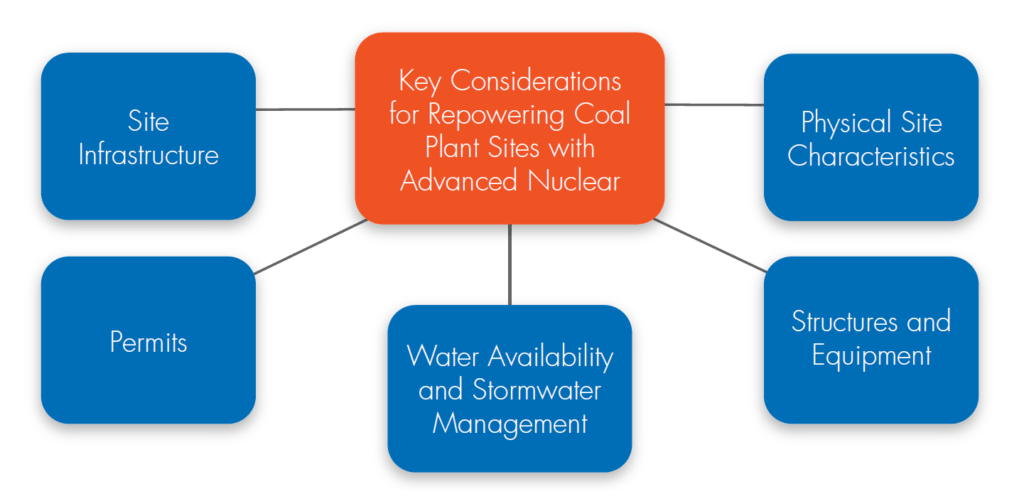
Siting Considerations
Repowering a coal plant site with new generation can support both owner and stakeholder goals, while allowing the utility to maintain ownership of sites that may have legacy environmental impacts. Many utilities seek strategies to evaluate the potential for repowering of coal-powered facilities and sites planned for decommissioning to the low-carbon and carbon-free generation provided by nuclear.
General Considerations
While repowering is complex and requires careful planning, nuclear development supports the transition to clean energy and presents several opportunities to leverage existing coal plant land use, transmission corridor, cooling water availability, various elements of site infrastructure, and key rights and permits.
This may translate to reduced nuclear development costs through shorter construction timelines, reduced environmental impacts, and increased community support. The Electric Power Research Institute expands on five key considerations in its Repowering Coal-Fired Power Plants for Advanced Nuclear Generation white paper.

Potential Sites
In the analysis done for the U.S. Department of Energy’s Investigating Benefits and Challenges of Converting Retiring Coal Plants into Nuclear Plants report, potential coal plant sites were evaluated based on a set of ten parameters including population density, distance from seismic fault lines, flooding potential, and nearby wetlands, to determine if they could safely host a nuclear power plant.
After screening all retired coal sites to a set of 158 potential candidates and screening operating sites to a set of 237 candidates, the study estimates that 80% of retired and operating coal power plant sites that were evaluated have the basic characteristics needed to be considered amenable to host an advanced nuclear reactor.

